
Comet Neowise soars in the horizon of the early morning sky in this view from the near the grand view lookout at the Colorado National Monument west of Grand Junction, Colo., Thursday, July 9, 2020. The newly discovered comet is streaking past Earth, providing a celestial nighttime show after buzzing the sun and expanding its tail. (Conrad Earnest via AP)
CAPE CANAVERAL, Fla. (AP) - A newly discovered comet is streaking past Earth, providing a stunning nighttime show after buzzing the sun and expanding its tail.
Comet Neowise swept within Mercury's orbit a week ago. Its close proximity to the sun caused dust and gas to burn off its surface and create an even bigger debris tail. Now the comet is headed our way, with closest approach in two weeks.
NASA's Neowise infrared space telescope discovered the comet in March.
Scientists involved in the mission said the comet is about 3 miles (5 kilometers) across. Its nucleus is covered with sooty material dating back to the origin of our solar system 4.6 billion years ago.
The comet will be visible around the world until mid-August, when it heads back toward the outer solar system. While it's visible with the naked eye in dark skies with little or no light pollution, binoculars are needed to see the long tail, according to NASA.
Astronauts aboard the International Space Station have already caught a glimpse.
NASA's Bob Behnken shared a spectacular photo of the comet on social media late Thursday, showing central Asia in the background and the space station in the foreground.
"Stars, cities, spaceships, and a comet!" he tweeted from orbit.
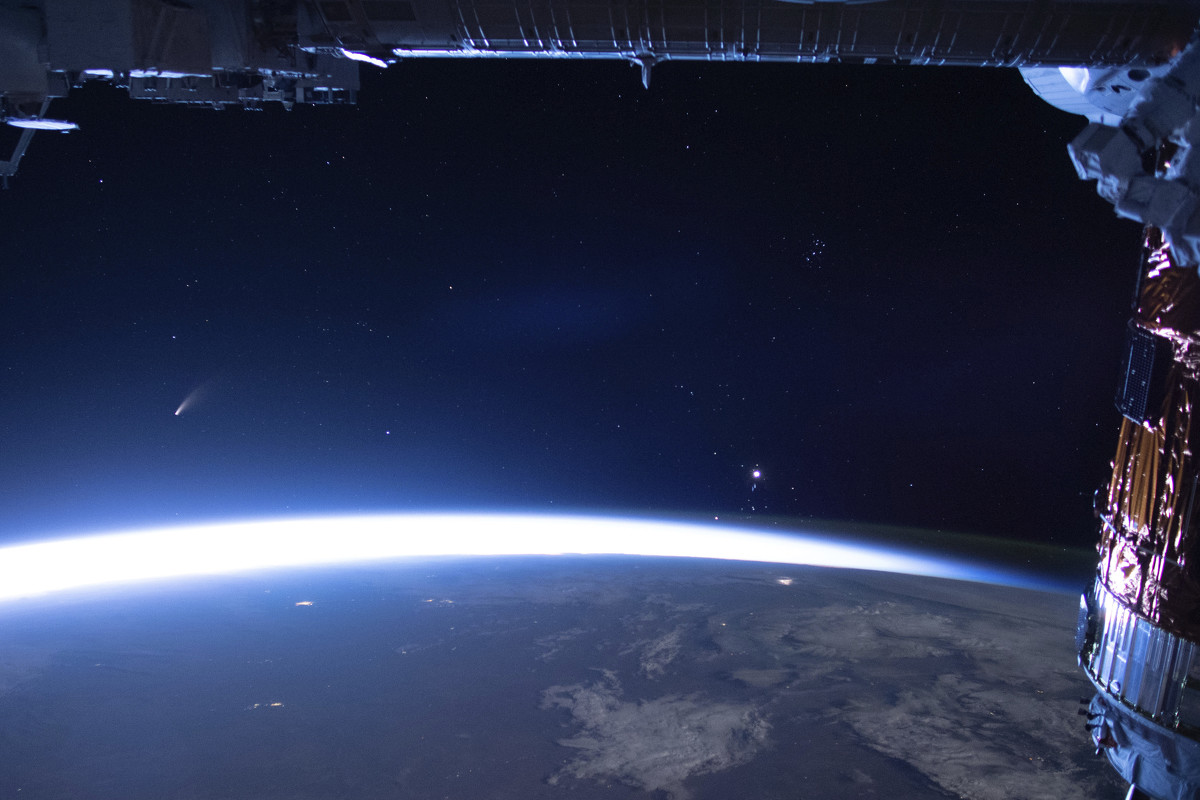
In this image released by NASA, Comet Neowise, left, is seen in the eastern horizon above Earth in this image taken from the International Space Station on Sunday, July 5, 2020. (NASA via AP)
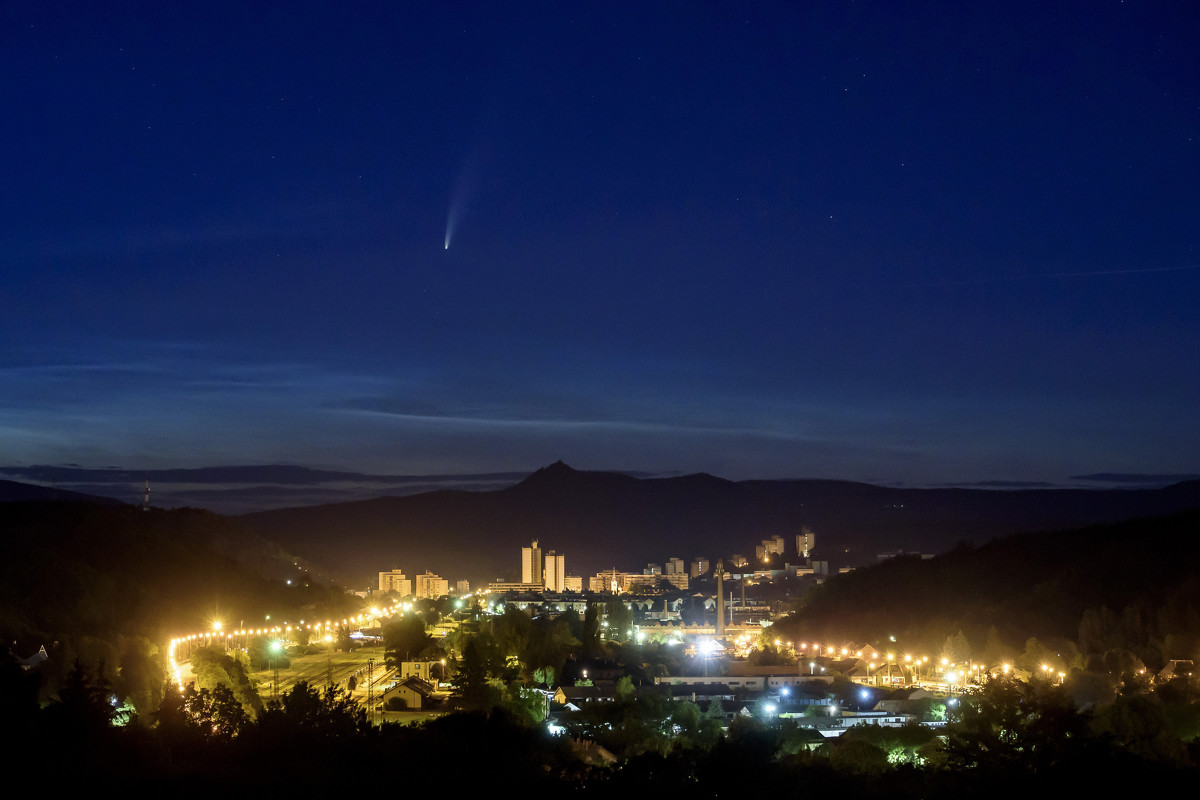
The Comet NEOWISE or C/2020 F3 is seen above Salgotarjan, Hungary, early Friday, July 10, 2020. It passed closest to the Sun on July 3 and its closest approach to the Earth will occur on July 23. (Peter Komka/MTI via AP)
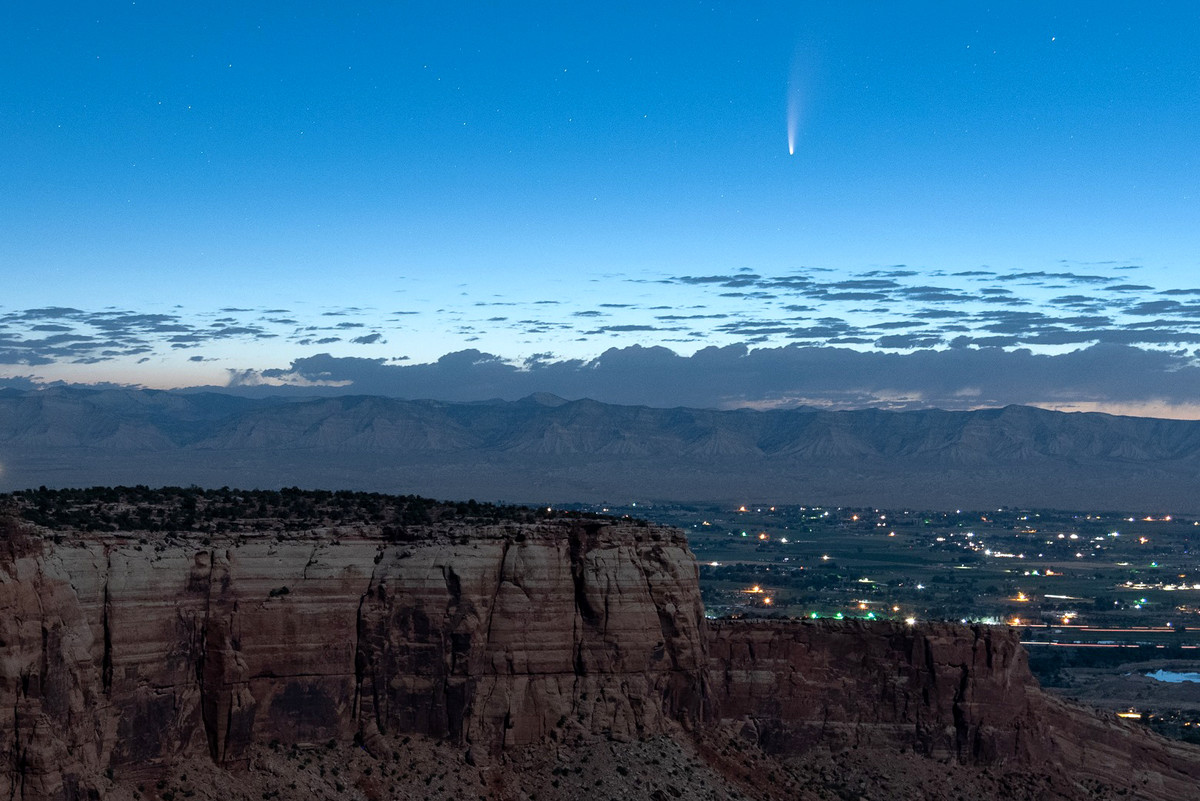
Comet Neowise soars in the horizon of the early morning sky in this view from the near the grand view lookout at the Colorado National Monument west of Grand Junction, Colo., Thursday, July 9, 2020. The newly discovered comet is streaking past Earth, providing a celestial nighttime show after buzzing the sun and expanding its tail. (Conrad Earnest via AP)
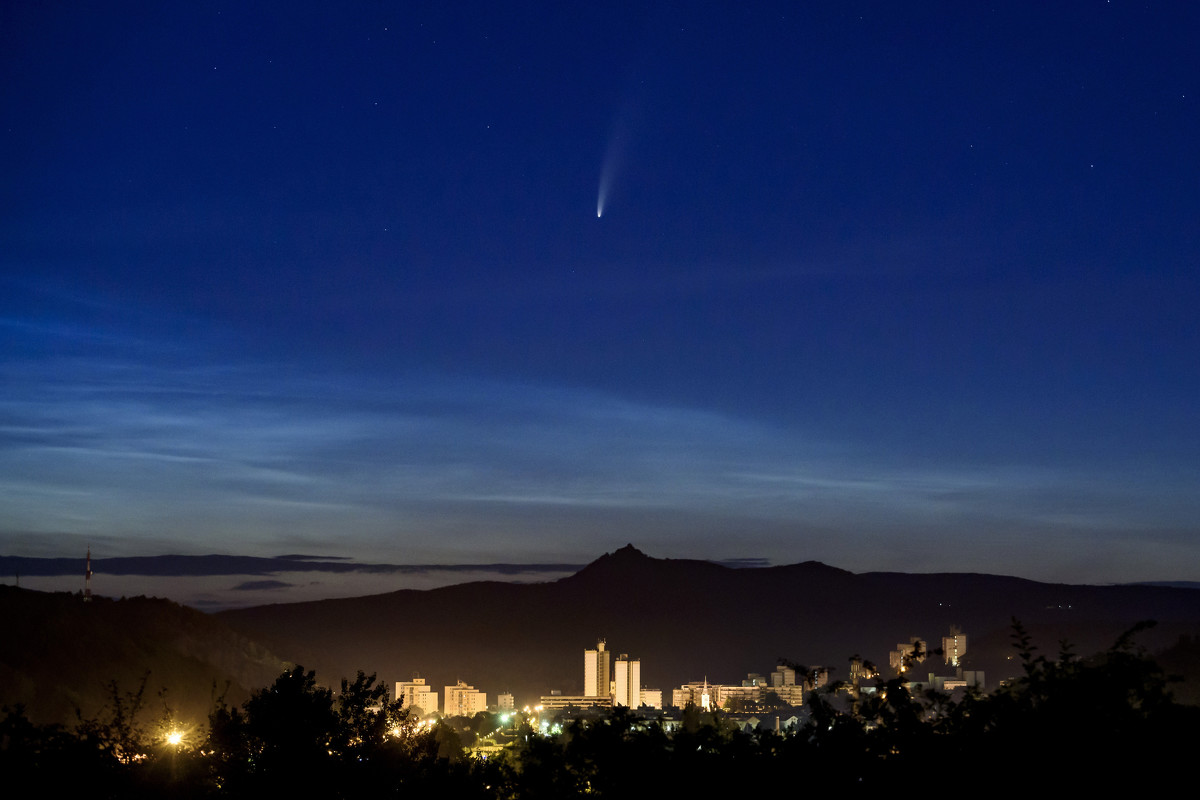
The Comet NEOWISE or C/2020 F3 is seen above Salgotarjan, Hungary, early Friday, July 10, 2020. It passed closest to the Sun on July 3 and its closest approach to the Earth will occur on July 23. (Peter Komka/MTI via AP)
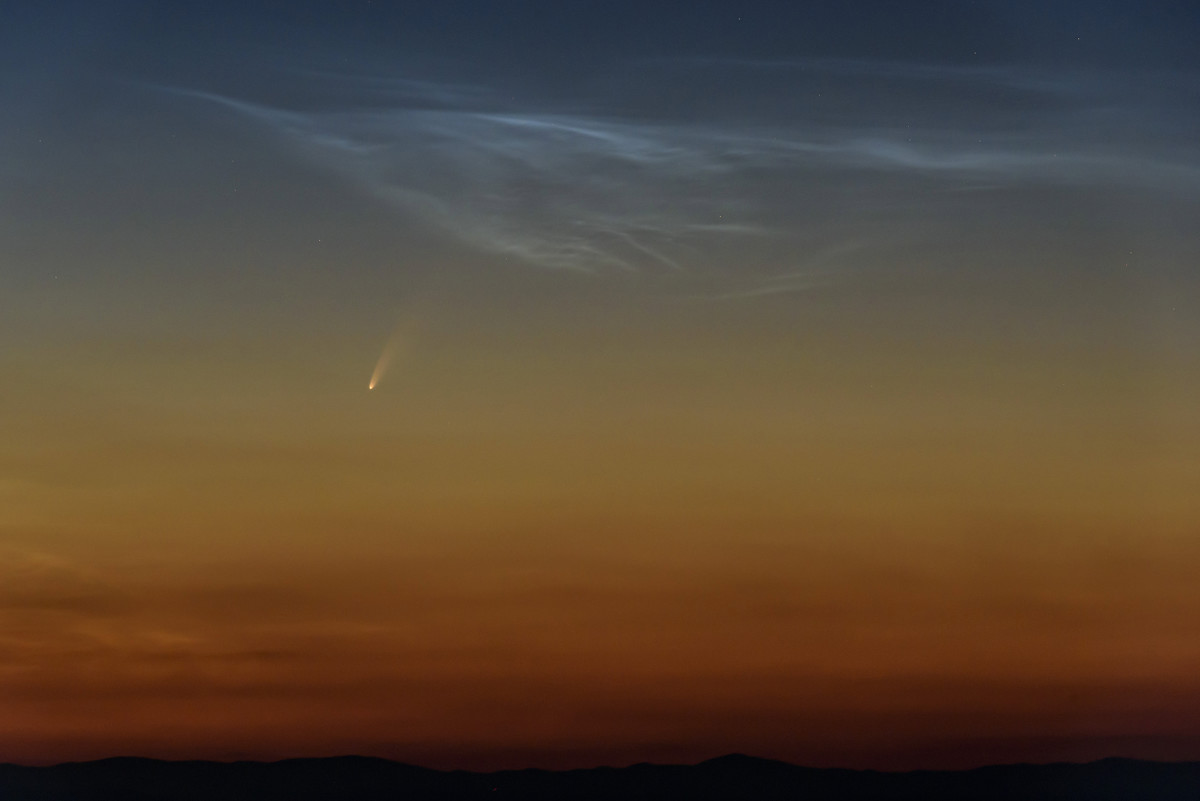
The Comet NEOWISE or C/2020 F3 is seen above Cered, Hungary, Monday, July 6, 2020. It passed closest to the Sun on 03 July and its closest approach to Earth will occur on 23 July. (Peter Komka/MTI via AP)
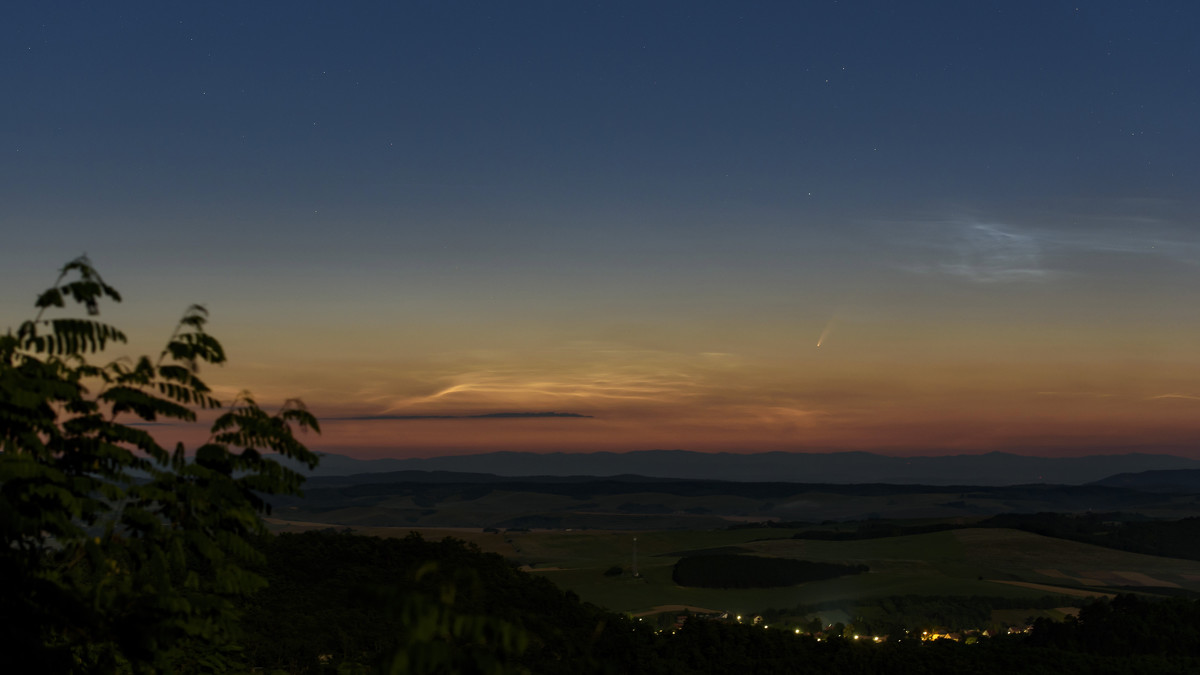
The Comet NEOWISE or C/2020 F3 is seen above Cered, Hungary, Monday, July 6, 2020. It passed closest to the Sun on 03 July and its closest approach to Earth will occur on 23 July. (Peter Komka/MTI via AP)